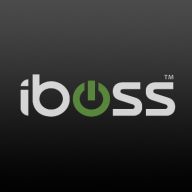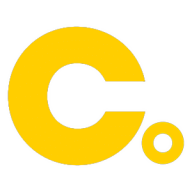


Find out what your peers are saying about Palo Alto Networks, Cisco, Netskope and others in Cloud Access Security Brokers (CASB).
| Product | Market Share (%) |
|---|---|
| Microsoft Defender for Cloud Apps | 7.6% |
| iboss | 2.4% |
| CensorNet Cloud Application Security | 0.3% |
| Other | 89.7% |

| Company Size | Count |
|---|---|
| Small Business | 6 |
| Midsize Enterprise | 6 |
| Large Enterprise | 5 |
| Company Size | Count |
|---|---|
| Small Business | 15 |
| Midsize Enterprise | 10 |
| Large Enterprise | 19 |
Iboss offers a comprehensive cloud-based security platform valued for its scalability and autonomous features, ensuring robust security with easy deployment and management capabilities.
Renowned for its robust security architecture, Iboss integrates seamlessly within diverse networks, delivering efficient granular filtering and advanced content categorization. Its single pane of glass console provides ease of management, allowing rapid scalability suitable for rapidly deploying environments. Operates in BYOD setups due to inline filtering without device installation. Integration with cloud-based applications enhances user control, and features like SASE, SSL inspection, and ChatGPT risk protection stand as highlights. Despite its strengths, users have pointed out areas for enhancement like direct navigation in reports, SSL decryption, and better cloud integration while having room to improve data loss prevention.
What are the most important features of Iboss?The usage of Iboss spans educational institutions, specifically K-12, to enforce internet policies, protect data, and support remote work environments. It provides web filtering and security frameworks to ensure safe browsing. Its platform-as-a-service model offers flexibility for both cloud-based and on-premises requirements, integrating seamlessly to deliver enhanced security features suitable for various deployment needs including zero trust, CASB, and network security for work-from-home setups.
CensorNet Cloud Application Security is a cloud security solution that provides organizations with visibility, control, and protection for their cloud applications and services. It focuses on securing cloud-based applications and ensuring compliance with data protection regulations.
CensorNet Cloud Application Security Benefits:
CensorNet Cloud Application Security Features:
CensorNet Cloud Application Security offers visibility into the cloud applications and services being used within an organization's network. It helps identify shadow IT and provides insights into cloud usage patterns, facilitating effective management and control.
The solution enables organizations to enforce data loss prevention policies for cloud applications. It helps identify and control the sharing of sensitive data, prevents data leakage, and ensures compliance with data privacy regulations.
CensorNet Cloud Application Security allows organizations to enforce granular access controls for cloud applications. It integrates with identity management systems and supports features such as single sign-on (SSO), multi-factor authentication (MFA), and role-based access control (RBAC) to ensure secure and authorized access.
The solution includes threat protection mechanisms to detect and mitigate cloud-based threats. It employs advanced threat intelligence, behavior analytics, and machine learning algorithms to identify and respond to suspicious activities, malware, account compromises, and other security threats.
CensorNet Cloud Application Security helps organizations monitor and maintain compliance with data protection regulations and industry standards. It provides reporting functionalities, compliance templates, and automated policy enforcement to demonstrate adherence to regulatory requirements.
The solution helps organizations discover and gain visibility into unauthorized or risky cloud applications used within their network. It allows IT teams to assess risks, enforce policies, and take appropriate actions to manage and control cloud usage effectively.
Microsoft Defender for Cloud Apps is a comprehensive security solution that provides protection for cloud-based applications and services. It offers real-time threat detection and response, as well as advanced analytics and reporting capabilities. With Defender for Cloud Apps, organizations can ensure the security of their cloud environments and safeguard against cyber threats. Whether you're running SaaS applications, IaaS workloads, or PaaS services, Microsoft Defender for Cloud Apps can help you secure your cloud environment and protect your business from cyber threats.
Reviews from Real Users
Ram-Krish, Cloud Security & Governance at a financial services firm, says that Microsoft Defender for Cloud Apps "Integrates well and helps us in protecting sensitive information, but takes time to scan and apply the policies and cannot detect everything we need".
PeerSpot user, Senior Cloud & Security Consultant at a tech services, writes that Microsoft Defender for Cloud Apps "Great for monitoring user activity and protecting data while integrating well with other applications".
Simon Burgess,Infrastructure Engineer at SBITSC, states that Microsoft Defender for Cloud Apps is "A fluid, intelligent product for great visibility, centralized management, and increased uptime".
We monitor all Cloud Access Security Brokers (CASB) reviews to prevent fraudulent reviews and keep review quality high. We do not post reviews by company employees or direct competitors. We validate each review for authenticity via cross-reference with LinkedIn, and personal follow-up with the reviewer when necessary.